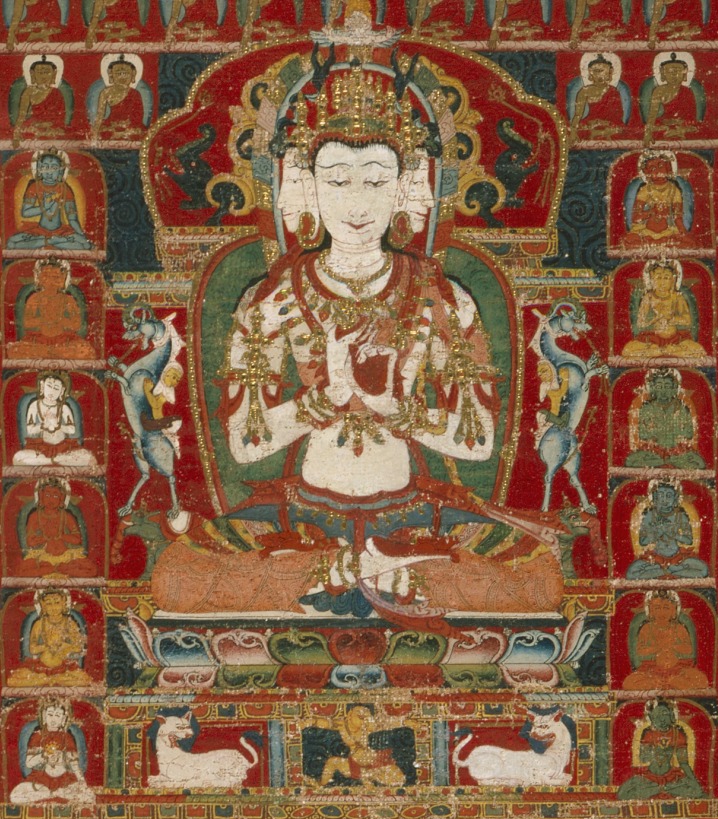Tibetan: rigs. Sanskrit: kula.

The five ‘Enlightened Families’ are perfected, purified states of our five aggregates, elements, sense-organs, and sensory perceptions. Since all sentient beings possess these faculties, either in their potential or fully manifest forms, any individual who attains buddhahood realizes their perfected state. Each of the five enlightened families comprise a central male buddha, representing one of the purified aggregates, and a female buddha representing one of the purified elements. In addition, four of the five enlightened families are surrounded by peripheral bodhisattvas, representing the purified sense-organs, and sensory perceptions.
The five are as follows:
- the buddha-family headed by the male buddha Vairocana (the purified aspect of our aggregate of consciousness/form)
- the vajra family headed by the male buddha Akshobhya (the purified aspect of our aggregate of consciousness/form)
- the ratna family, headed by the male buddha Ratnasambhava (the purified aspect of our aggregate of feeling)
- the padma family, headed by the male buddha Amitabha (the purified aspect of our aggregate of perception/discrimination)
- the karma family, headed by the male buddha Amoghasiddhi (the purified aspect of our aggregate of conditioning and motivational factors)
The correlation between the ‘enlightened-families’ and the aggregates can vary according to differing tantric system, particularly in the case of Vairocana and Akshobhya who may alternately be know as the purified aspect of consciousness or of form.
Bibliography: The Handbook of Tibetan Culture, 1993. Compiled by Graham Coleman


8 Replies to “The Enlightened Families”